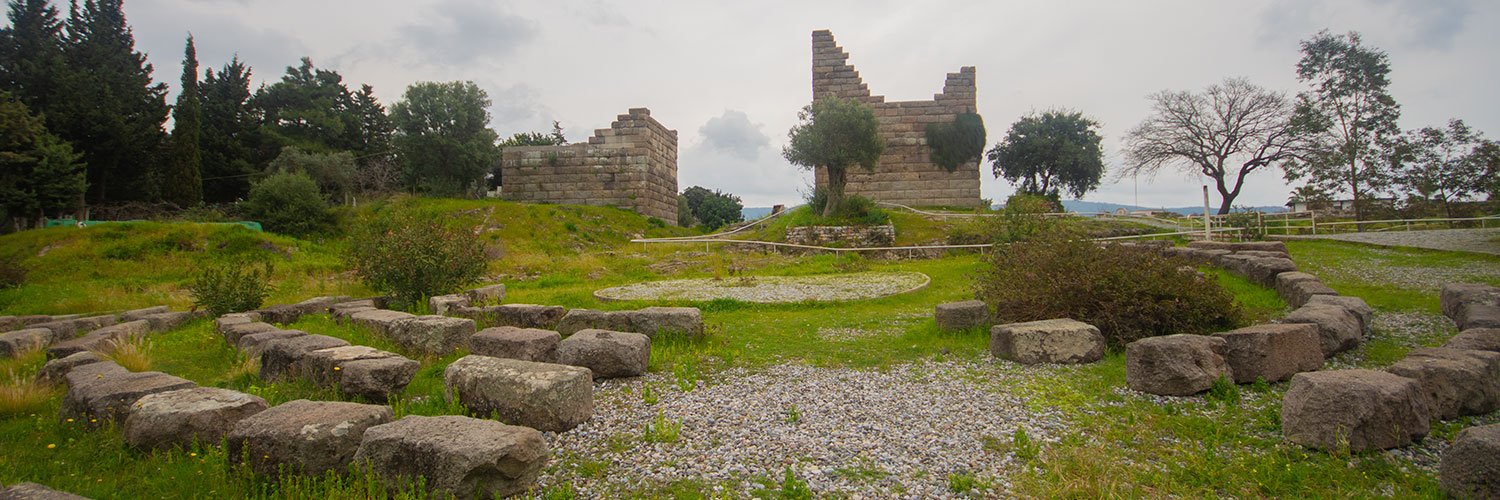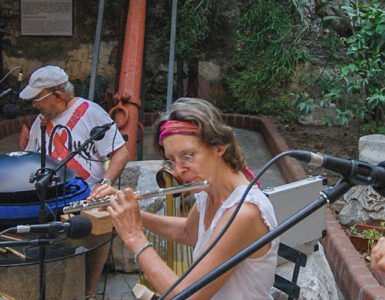Turkey, located between Europe, Asia, and Africa, has been a bridge connecting these three continents since the ancient times. Its strategic position and pleasant climate have attracted various civilizations throughout human history. The history of Bodrum, an essential part of the historical background of Turkey, provides valuable insights into our past.
The Turkish coast have been inhabited since the Stone Age. Archaeologists have discovered caves containing tools used by our ancestors more than 100,000 years ago. Anatolia, also known as Asia Minor, played a significant role in the development of agriculture and the domestication of animals, such as sheep and goats. Port cities along the western and southwestern coasts, including Bodrum, served as important hubs for spreading new technologies to the Western world.
The history of Bodrum is rich with interesting stories that you can explore during your visit. However, if you’re a history enthusiast, I recommend planning your trip carefully because taking a journey through time can be challenging due to high temperatures in summer season.
In This Article
- The Enigmatic Aegean World
- History of Bodrum Through Herodotus’ Eyes
- Persian Domination and a Satrap in Aegean Lands
- The Assassination of Ceasar and Bodrum’s Historical Connection
- An Unlikely Alliance Between the Ottomans and the Knights of Hospitallers
- Conflict between the Central Powers and the Allied Powers
- Italian Footprints in the History of Bodrum
- The Turkish War of Independence
- Demographic Shifts in 1923
The Enigmatic Aegean World
According to archaeological findings, there were different communities in the southern and western parts of Turkey during the Prehistoric Period. The advancements in farming, city construction, and copper smelting made Asia Minor a hub of innovation.
Our understanding of prehistoric periods is primarily based on speculation derived from archaeological findings, burial sites, fossils, and simple structures. As more advanced civilizations emerged in history, such as the Hittites, we gained more data to study their times. Thus, the events and occurrences in the history of Bodrum become more apparent as we move away from the Iron Age.

The Hittites are among the earliest civilizations in history. They built a powerful empire around the 17th century BC in central Turkey. Their capital, Hattusa, is now recognized as a UNESCO World Heritage Site. Under the leadership of the mighty ruler Suppiluliumas, the empire expanded its borders towards Syria in the southeast and Egypt in the south. Additionally, Suppiluliumas conquered the entire western coast of Turkey, where Bodrum is located, as well as some Aegean islands.
Around 1200 BC, the Aegean region entered a period known as the dark age. It was dark because we have limited knowledge of what happened in the region for a span of 600 years. While some scholars suggest that the Dorians invaded the area, the events of those six centuries still remain a perplexing mystery. During this time, the history of Bodrum remained unclear until the arrival of the Persians.
History of Bodrum Through Herodotus’ Eyes
When we talk about the history of Bodrum, the first important information we find is in Homer’s famous ancient epic poem, the Odyssey. The Odyssey has had a significant impact on Western literature and philosophy since the 6th or 7th century BC. However, Herodotus, one of the most notable figures of Bodrum’s history, is our main source for us to understand the ancient city’s economy, politics, architecture, and way of life.
Herodotus was the first historian who described the nations in Asia Minor. The power struggles between civilizations, and their diplomatic relations were his main topics. Fortunately, he also provided a wealth of information about his hometown, Halicarnassus.

According to Herodotus, the indigenous population of ancient Halicarnassus was the Leleges before the arrival of the Greeks. Around 1200 BC, the Dorians from the Balkans invaded Anatolia by passing through the Aegean islands. In the early 7th century BC, a Dorian confederation was ruling over the region. The cities in the confederation were Halicarnassus, Kos, Cnidus, Ialysos, Kamerios, and Lindos.
However, the confederation somehow expelled Halicarnassus, leaving it alone in a politically unstable region. The Lydian kings took this opportunity to invade the city. The city fell under the control of the Lydia Kingdom in the 6th century BC. An interesting fact for those who don’t know is that the Lydians not only conquered Bodrum but also invented money!
Anyway, Lydia’s control over the area was short-lived, as the Persians arrived and took over the throne in 546 BC. This was the first important milestone in the history of Bodrum.
Persian Domination and a Satrap in Aegean Lands
The Persian strategy for governing invaded lands was quite straightforward and effective. They would appoint a local governor called a satrap, who would have the freedom to make decisions regarding internal affairs. When the Persians declared war on another nation, the satrap would be required to join the emperor’s side in battle. Additionally, the satrap had to pay taxes to ensure ongoing support from the emperor. For example, Halicarnassus fought on the Persian side during the invasion of Greece in 480 BC.

The most renowned and successful satrap in the history of Bodrum was Mausolus, who was also a tyrant. He ruled Caria from 377 BC to 353 BC. One of his first actions was to move the capital from Mylasa – now known as Milas – to Halicarnassus. Mausolus understood the strategic advantage of having a port city as the capital.
Mausolus had a versatile personality. He had a keen eye for aesthetics, and he was very affectionate for Greek art and architecture. He started on a major project to rebuild Halicarnassus. Architects from Greece contributed to this endeavour, leaving a lasting impact on the history of Bodrum.
Witnessing the Beauty through Time
In the 1st century BC, a famous Roman architect named Marcus Vitruvius Pollio described Halicarnassus in his well-known work, “De Architectura”:
As for Mausolus’ skill and ingenuity as a builder, they may be seen from what follows. He was born at Mylasa but recognising the natural advantages of Halicarnassus as a fortress and seeing that it was suitable as a trading centre and that it had a good harbour, he fixed his residence there. The place had a curvature like that of the seats in a theatre. On the lowest tier, along the harbour, was built the forum.
About half-way up the curving slope, at the point where the curved cross-aisle is in a theatre, a broad wide street was laid out, in the middle of which was built the mausoleum, a work so remarkable that it is classed among the Seven Wonders of the World. At the top of the hill, in the centre, is the Temple of Mars, containing a colossal acrolithic statue by the famous hand of Leochares. At the extreme right of the summit is the Temple of Venus and Mercury, close to the spring of Salmakis.
The Wonder in the History of Bodrum
While Halicarnassus was undergoing changes, Mausolus kept working to achieve his other strategic and aesthetic goals. His objective was not only to develop the ancient city of Bodrum. The entire region between Myndos, known as Gumusluk today, and Kaunos where modern-day Dalyan is located was in his radar. Additionally, he proved his military skills by invading the island of Rhodes.

Mausolus was obsessed with immortality. His desire to live forever led him to build his own monumental tomb while still alive. He hired Greek architects Satyros and Pythius of Priene to design the building. That building became one of the Seven Wonders of the World today. The Mausoleum at Halicarnassus was not yet complete when he passed away. Following his demise, his wife and sister Artemisia II took charge and finished the construction which later becomes an indispensable part of the history of Bodrum.
The satrap’s dream was to reach eternity with a monumental tomb after leaving the physical world. Time has proven his success. The story behind the mausoleum has been carried over thousands of years. Today, his name is still used for the standalone monuments we build for our beloved ones in many languages. Including Turkish, mozole…
The Assassination of Ceasar and Bodrum’s Historical Connection
Heraclitus, an ancient Greek philosopher from Ephesus, stated that the only thing that remains constant in life is change. Even the mightiest civilizations in history have also experienced change.
In the 4th century BC, the Persian era in the history of Bodrum came to an end. Alexander the Great, one of history’s greatest conquerors, took control of Halicarnassus. He wanted to incorporate this port city into his territory. He established his headquarters near Mylasa and formed an alliance with Queen Ada of Caria to invade Bodrum. Some sources suggest that there may have been more than just an alliance between Alexander and Ada.

Whatever their relationship was, their alliance successfully captured Halicarnassus in 334 BC after a siege followed by a bloody battle. The port city remained under the control of Alexander and his successors for nearly 150 years. After the Ptolemies, a Macedonian Greek royal dynasty, Halicarnassus remained independent for another 70 years. Then, another important chapter in local history has started with the arrival of the Romans in 129 BC.
In 43-44 BC, another historical celebrity, Marcus Junius Brutus, became a part of Bodrum’s history. Brutus was a Roman politician known for assassinating Julius Caesar in 44 BC. After assassinating Caesar at the senate, Brutus and his companions did not receive the support they expected from the Senate and the public. They left Rome until the political unrest subsided.
Brutus, Longinus, and Albinus chose Myndos as their new headquarters. Myndos is the ancient name of my favourite town in the Bodrum Peninsula, Gumusluk. It was an unfortunate choice for the city because being associated with Caesar’s killers damaged its reputation. The region endured centuries of constant humiliation and exploitation thereafter.
An Unlikely Alliance Between the Ottomans and the Knights of Hospitallers
The medieval period in the history of Bodrum was about civilizations and ambitious rulers engaging in power struggles, just like it was in ancient times.
In the 13th century, Turks predominantly inhabited the Aegean region of Turkey. The Beylik of Menteshe was a member of the Anatolian Union, ruled over the southwestern part of Turkey. They built a fortress in Halicarnassus to protect themselves from attacks originating from the Aegean Sea. The construction of this fortress was the beginning of Bodrum Castle’s history. The beylik surrendered to Ottoman rule in 1392 and joined the Ottoman Empire in 1414.

In the Battle of Ankara, the Turk-Mongol conqueror Timur defeated the Ottoman Sultan Bayezid the Thunderbolt, also known as Yildirim Bayezid in 1402. Encouraged by this victory, Timur continued his conquest towards the west and easily reached Smyrna, which is today’s Izmir, without facing any significant resistance.
Smyrna was home to a castle owned by the Knights of St. John, an order from the island of Rhodes. Timur attacked their castle, razing it to the ground.
The Knights of St. John in the History of Bodrum
The destruction of the castle was a major blow to the Knights Hospitaller. They had just lost a strategically important castle that allowed them to control the southeast Aegean. In order to regain control, they urgently needed to build a new castle. They approached the Ottoman Sultan Mehmet I, son of Yildirim Bayezit, and requested permission to build a new castle. Despite objections from the Beylik of Menteshe, the Sultan granted them permission to build their new castle at Halicarnassus. This decision marked another turning point in the history of Bodrum.
The Knights Hospitaller began constructing a new castle on the site of the previous fortress built by the Beylik of Menteshe. The construction of Bodrum Castle took approximately 120 years with various interruptions.
In 1523, Suleyman the Magnificent, another Turkish Sultan, besieged the Island of Rhodes where the headquarters of the Knights was located. Rhodes fell, and the knights were forced to retreat to Malta, leaving Rhodes, and Halicarnassus, back under Ottoman control.

In 1775, the Ottoman fleet in Cesme was set on fire by the Russians, weakening the Ottoman navy. To address this issue, Admiral Mustafa Pasha was assigned by the sultan to find a suitable location for a new shipyard. He chose Bodrum and between 1784 and 1831, the Ottoman shipyard in Bodrum constructed several galleons.
Today, the ruins of the shipyard remind us of another era in the history of Bodrum. Restored buildings serve as an exhibition centre where visitors can enjoy the works of local artists. Located just next to the Bodrum Marina, it also provides a peaceful and relaxing escape from the busy streets.
Conflict between the Central Powers and the Allied Powers
The first half of the previous century witnessed global power struggles that resulted in the loss of millions of lives. During World War I, the history of Bodrum was also affected by these conflicts. Since Bodrum was not a strategic battleground, the physical damage it took remained relatively low. However, it did cause a separation between two neighbouring countries, Turkey, and Greece, who used to live and work together.
There were two sides fighting in the war. The Ottoman Empire joined the war on the side of the Central Powers, which consisted of Austria-Hungary and Germany. The Allied Powers – including Russia, France, Britain, and Japan – were on the opposite side. As the war progressed, Bulgaria joined the Central Powers, while Italy, Portugal, Romania, the United States, and Greece fought with the Allied Powers.

Before the war, Turkish and Greek communities on the Aegean coast of Turkey and the nearby Greek islands were living together in peace. The Greek islands like Kos, Samos, Chios, and Kalymnos depended on the Turkish coasts for their livelihood because the mainland of Greece was far away. For example, Kos was just 5 kilometres from the Turkish mainland. Considering the transportation technology – no planes or ferries – of the 18th and 19th centuries, this was understandable.
The Allied Powers never initiated a specific attack on Bodrum. However, French, and British warships passing by occasionally fired their cannons at the city, particularly aiming at the castle and destroying the south walls. The city managed to survive the war without surrendering.
Italian Footprints in the History of Bodrum
After the war, the Ottoman Empire was very weak and on the verge of collapse. Mustafa Kemal Ataturk, the founder of the Republic of Turkey and our national hero, organized a resistance against the powerful nations and started the Turkish War of Independence. As the independence war spread throughout Anatolia, Italians invaded Bodrum in 1919.
The Italian presence in Bodrum was quite interesting, as I heard from locals who learned about it from their grandparents. It was the most peaceful invasion in the history of Bodrum. The Italians settled in the castle and kept their distance from the locals. They did not interfere with what was happening in Bodrum and rarely left the castle. They were like the first tourists in town. Perhaps that’s why the locals still have a special sympathy for them.
The Italians utilized the castle as a central point, a place where people could gather. Refugees from different parts of Anatolia would come to Bodrum Castle and wait there until a ship arrived to transport them to their homelands.
The War of Independence was fought on many fronts, from east to west. The Turkish independence armies slowly moved towards the western coast, where the final stages of the war took place. Bodrum was recaptured in 1921.
The Turkish War of Independence
The Allied Powers of World War I defeated the Central Powers in 1918. Following this defeat, they started to make plans to divide the Ottoman Empire among France, the United Kingdom, Greece, and Italy. Naturally, Turkish patriots were not happy with this partition plan which eventually ignited the Turkish War of Independence in 1919, led by Mustafa Kemal Ataturk.
Ataturk was a high-ranking officer in the Ottoman army, his goals were way beyond military achievements. He knew that victories on the battlefield alone were insufficient for reconstructing a nation. With his words, the most important battle was the battle against ignorance.

As the war for independence against the sultan and his allies continued on various fronts, Ataturk established the Grand National Assembly in Ankara on April 23, 1920. However, Sultan Vahdettin kept cooperating with the nations seeking to divide Anatolia. Their persistence in their partitioning agenda was made official with the signing of the Treaty of Sevres on August 10, 1920. This treaty gave most of the Ottoman territory to the Allied Powers, leaving only a small portion in central Anatolia for the local population.
The signing the Sevres was a mistake! It was the final straw for the Anatolian population, which had already endured centuries of poverty under Ottoman rule. The harsh terms of the treaty increased hostility towards the Allied Powers and strengthened the cause for the Turkish War of Independence.
The occupying forces were completely defeated in September 1922, and the war concluded with the signing of the Treaty of Lausanne on July 24, 1923. With Lausanne, Ataturk could move forward with implementing a series of revolutions to convert a poor and illiterate nation into a modern and secular society. He marked his will by declaring the foundation of the Republic of Turkey on October 29, 1923.
Demographic Shifts in 1923
The Last War in the History of Bodrum
The history of Bodrum changed its course with a significant event that took place in 1923, the population exchange between Turkey and Greece. During the exchange, over half a million people had to leave their hometowns, where they were born and raised. I met some families with Cretan origin, and I know that this relocation left lasting emotional wounds on their souls. These wounds have been passed down from one generation to the next.
Before the outbreak of the First World War, Turkish and Greek communities lived together peacefully in the region. However, when the Ottoman Empire and the Kingdom of Greece chose different sides in the war, things became complicated for the people living at both sides of the Aegean.
There was already a considerable number of Greeks living along the Turkish coasts. Some of them were there because they were married to Turkish people, while others had their businesses running in Asia Minor. Regardless of the reason, these lands were their homes.
Starting with the occupation of Izmir in WWI, the Greek population in Turkey tripled due to the new Hellenization strategy of the Kingdom of Greece. This strategy involved relocating the Greek population to Anatolian coasts, which drastically changed the demography. Families from Greece were given farmlands and houses that had previously belonged to locals before the occupation. Turkish people had to leave their homes and migrate to the inner territories of Anatolia, where occupying forces were relatively weak.
The western front of the Turkish War of Independence is also known as the Greco-Turkish War. It resulted in the defeat of the Kingdom of Greece during the Great Offensive on September 18, 1922.
The Exchange and Integration
In January 1923, the new Ataturk government and the Kingdom of Greece sat down together in Lausanne, Switzerland to discuss the fate of minorities in both countries. The Turkish and Greek governments signed the Convention Concerning the Exchange of Greek and Turkish Populations. This led to the relocation of Turkish minorities in Greece to Turkey and Greek minorities in Turkey to Greece. While the relocation shaped the local culture, it also changed the history of Bodrum once again.
It was necessary for those immigrants of the Hellenization strategy of the Kingdom of Greece to go back their homeland. However, the Greek population who had already been living in Turkey before the war also had to leave their homes. Similarly, more than 300,000 Turkish people who had been living in Greece for generations were forced to find themselves a new home in Turkey.

This was undoubtedly a difficult situation for both sides. Imagine that one day, someone tells you that you have to leave your home, friends, and the culture you were raised in, simply because of your ethnicity. Wars are always ugly, regardless of the cause. However, being forced to live in an unfamiliar culture is especially cruel.
The Beautiful Fusion of the Both Sides of the Aegean Sea
Some of the Turkish minorities in Greece, particularly those from the island of Crete, were relocated to Bodrum without their consents. As if that were not enough, they were initially faced a cold welcome from the local population. The memories of the recent Greek occupation were still fresh in locals’ minds and the newcomers were clearly Greeks with their lifestyle, culture, and even language. I am guessing that the situation in Greece with the Greek minorities from Turkey was no different.
Today, I have many friends in Bodrum who have grandparents that were forced to leave Crete and relocate to Bodrum. They have their own societies dedicated to preserving the memories of the population exchange and passing them on to future generations. Their Cretan origin is still an important part of their identities. A Greek journalist I met in Bodrum told me that the descendants of the Greeks who had to leave their homes in Turkey share similar sentiments as well.

The people with Cretan origin have made significant contributions to the local culture of Bodrum. The fusion of these impressive cultures from both sides of the Aegean Sea has created a truly unique culture in Bodrum.
I can’t imagine a Bodrum trip without experiencing the delightful blend of Turkish and Cretan cuisines that characterize the local food, for example. I also believe that their contributions to the local culture and recent history of Bodrum have played a significant role in the town’s international popularity.
This is why I firmly believe that Turks and Greeks are like two halves of the same apple. Despite the attempts of politicians and education systems in both countries to manipulate history for their own agendas, the people themselves share a strong bond, much like sisters and brothers.
















Add comment